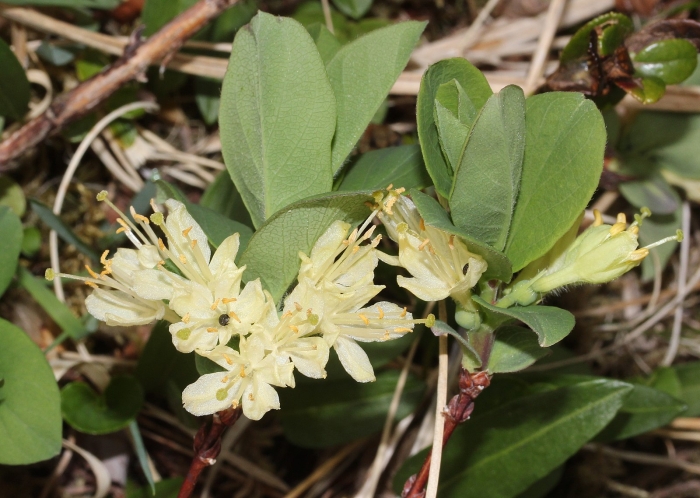Blue Honeysuckle
(Lonicera edulis)
Blue Honeysuckle (Lonicera edulis)
/
/

Alpsdake
CC BY-SA 4.0












Estimated Native Range
Summary
The blue honeysuckle is valued for its winter hardiness, early fruiting, and the nutritional value of its berries, which are rich in vitamin C and have seeds that are not noticeable when eaten. It is commonly used in edible landscaping and for fruit production, with the berries being harvested in late spring or early summer, just before strawberries for Russian varieties, and at a similar time for Japanese types. Cultivation requires high organic matter, well-drained soils, and plentiful sunlight for optimum productivity. While Lonicera caerulea plants can tolerate wetter conditions than most fruit species, they perform best in full sun to part shade with medium water requirements and soils with medium drainage. The berries are ready to harvest when the inner layer turns dark purple or blue.CC BY-SA 4.0
Plant Description
- Plant Type: Shrub
- Height: 4-6 feet
- Width: 4-6 feet
- Growth Rate: Moderate
- Flower Color: Yellow, White
- Flowering Season: Spring, Summer
- Leaf Retention: Deciduous
Growth Requirements
- Sun: Full Sun, Part Shade
- Water: Medium
- Drainage: Medium
Common Uses
Bank Stabilization, Bee Garden, Bird Garden, Butterfly Garden, Deer Resistant, Drought Tolerant, Edible*Disclaimer: Easyscape's listed plant edibility is for informational use. Always verify the safety and proper identification of any plant before consumption., Fragrant, Hummingbird Garden, Low Maintenance
Natural Habitat
native to boreal forests and forest edges in the cool temperate Northern Hemisphere, including regions of China, Japan, and Russia
Other Names
Common Names: Blue Honeysuckle, Honeyberry, Sweetberry Honeysuckle, Haskap
Scientific Names: , Lonicera edulis, Lonicera kamtschatica, Lonicera caerulea var. edulis, Lonicera caerulea subsp. edulis, Lonicera caerulea var. emphyllocalyx, Lonicera venulosa subsp. edulis, Lonicera caerulea subsp. kamtschatica, Lonicera caerulea f. longibracteata, Lonicera caerulea var. kamtschatica
GBIF Accepted Name: Lonicera caerulea subsp. edulis (Turcz. ex Herder) Hultén